Explore Professional E & O Insurance Today!
Even the most meticulous professionals can make mistakes. If a client suffers financial harm due to an error you or your business made (or an error they believe you made), professional liability insurance (also known as Errors & Omissions or E&O insurance, Professional Indemnity, PI, or Malpractice if you are in medical field) can be a lifesaver. Let's delve into the world of E&O insurance:
Why do I need professional liability insurance?
What factors influence the type of E&O coverage I need?
In my opinion, the best E&O policy depends heavily on your specific profession, risk profile, and industry. For example, a healthcare professional needs different coverage than a technology consultant. Consider the following:
- Your profession: Specific industries come with unique risks.
- Risk profile: Assess the types of errors or omissions that could be most damaging in your work.
- Client requirements: Some clients may have minimum coverage limits they mandate.
- Location: Regulations and legal climates can vary.
How much coverage should I get?
Are there other policy options to keep in mind?
Some insurers offer enhancements like the following:
- Cyber liability coverage: Protects against data breaches and cyber-attacks.
- Prior acts coverage: Provides coverage for incidents that occurred before your policy effective date.
- Regulatory defense coverage: Can help with costs of disciplinary hearings or investigations.
How can I reduce my E&O insurance premiums?
In my experience, rating can be reduce as your business tenure. Other factors including:
- Showing strong risk management practice: Document procedures, invest in train staff thoroughly, and maintain meticulous records.
- Deductible choice: A higher deductible can sometimes lower premiums but increases your out-of-pocket costs in a claim.
- Shop around: Compare quotes from reputable insurers specializing in E&O.
Where can I find a reputable E&O insurance provider?
What happens if a claim is filed against me?
Do I need professional liability insurance as independent consultant?
My employer offers some professional liability coverage. Is that enough?
How much does E&O insurance typically cost?
Can I still get E&O insurance if I've had past claims?
Is there a deductible for E&O insurance?
Provide A few Situational Example of E&O Claim
- A software developer's code error causes a client's website to malfunction, leading to lost sales. E&O insurance could cover the client's financial losses and the developer's defense costs.
- An architect's plans have a design flaw that causes construction delays and extra expenses for a client. E&O insurance could cover the client's damages and the architect's legal fees
- A financial advisor makes an unsuitable investment recommendation that results in losses for a client. E&O insurance could cover the judgment/settlement and the advisor's defense costs.
Frequently Asked Question about Insurance
What exactly is E&O insurance?
What does E&O Insurance cover?
Here's a breakdown of what Errors & Omissions insurance typically covers, along with some important considerations. Core Coverage Areas are:
- Defense Costs: E&O insurance pays for legal fees associated with defending yourself against a covered claim, regardless of whether the allegations against you ultimately have merit. This includes lawyer fees, court costs, and expert witness expenses.
- Judgments and Settlements: If a court finds you liable, or you settle with the client, your E&O policy covers these costs up to your policy's limits.
- Errors or Omissions: Protection against actual mistakes, failures, or oversights in the delivery of your professional services.
- Negligence: Coverage for claims that your work was not provided with the expected standard of care for your profession.
- Misrepresentation: Protection if a client claims you misled them, either intentionally or unintentionally, about the nature of your services.
- Breach of Contract: Coverage if a client alleges you failed to fulfill a contractual obligation within your professional relationship.
Important Notes
- Claim Trigger: Most E&O policies are "claims-made," meaning the incident and the claim must occur during the policy period for coverage to apply.
- Exclusions: Policies always have exclusions. Common ones include:
- Intentional wrongdoing
- Dishonest, fraudulent, or criminal acts
- Bodily injury or property damage (covered by general liability).
- Employment-related lawsuits
- Policy Limits: The maximum amount your insurer will pay per claim or over the policy period. Choose limits wisely!.
What's the difference between professional liability and general liability insurance?
- General Liability: Protects you against claims of bodily injury or property damage caused to others. Think of accidents that happen on your premises or during your work:
- A client trips over a loose cord in your office and breaks their arm.
- Your product malfunctions and causes a fire that damages a client's warehouse.
- Professional Liability (E&O): Protects against financial losses incurred by clients due to mistakes or oversights in the professional services you provide. It focuses on the quality of your work, advice, or designs:
- An error in your financial projections leads to your client making a bad investment.
- A flaw in your architectural design causes a structure to become unstable.
- Your marketing advice misses the mark, causing a missed product launch for your client.
In essence, general liability covers physical risks, while professional liability covers economic risks stemming from the work you do.

 EN
EN  FR
FR